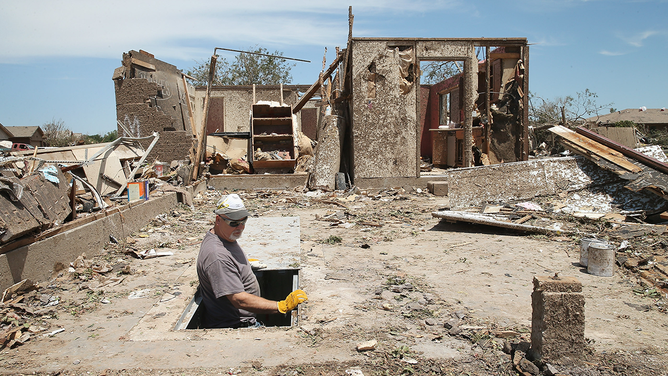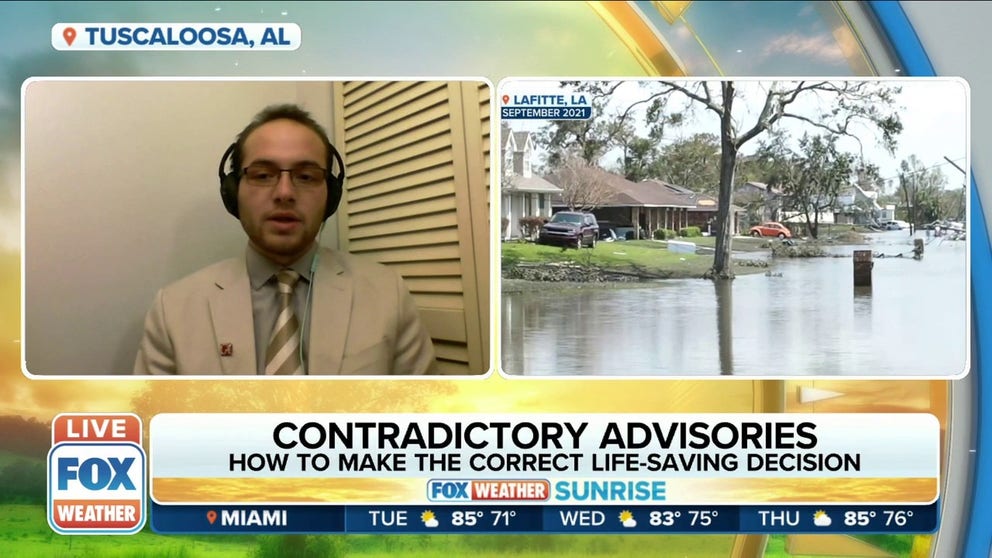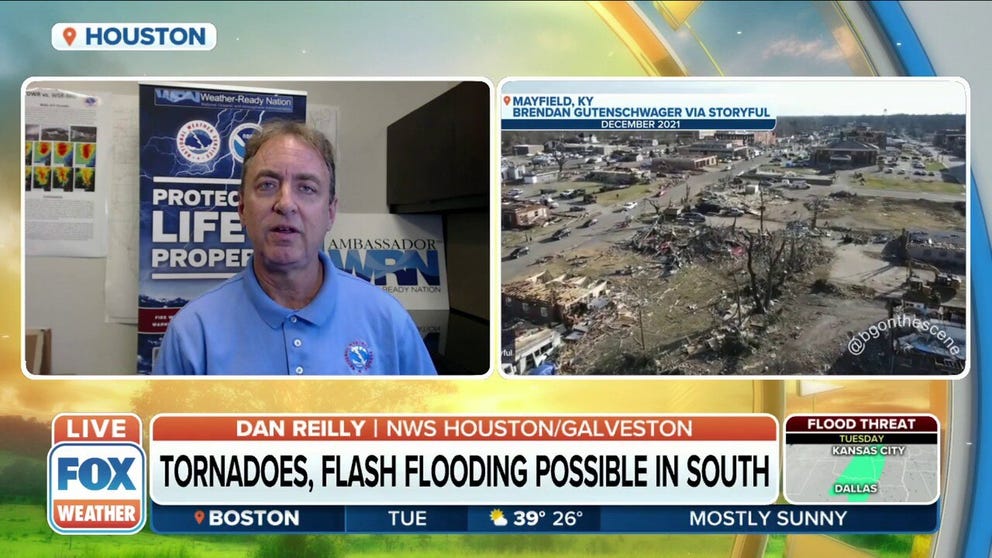Stay or go? Trusting your gut can be lifesaving when multiple weather warnings are issued
With severe weather warnings appearing to be on the rise, deciding what to do can be confusing
What to do when you get contradictory advisories from the NWS
Tornado Warnings advise people to head to their basements and a Flash Flood Warning advises people to seek higher ground. What should people do when there are contradictory reports?
You're at home, it's been raining heavily all day and a Flash Flood Warning has just been issued.
But, severe weather is also in the area and a Tornado Warning is issued at the same time.
What do you do?
HOW TO WATCH FOX WEATHER ON TV
If you haven't lived in a place where multiple severe weather events can happen simultaneously, you've probably never had to make a potentially life-changing decision like that.
But with what seems like an increase in severe weather, choosing to either seek higher ground or head to the basement can seem confusing.
Preparing for the possiblilties of tornado and flash flood warnings
Dan Reilly, with NWS Houston/Galveston, talks about preparing for the possiblilties of tornado and flash flood warnings.
"Weather advisories are issued to keep people safe, and most of the time, they do a good job at that," said Zachary Krauss, of the Alabama Water Institute. "However, sometimes we do have multiple warnings that are issued at the same time, and the instructions contained within can be contradicting."
WATCH VS, WARNING: HERE ARE THE DIFFERENCES BETWEEN THESE WEATHER TERMS THAT COULD SAVE YOUR LIFE
For example, Krauss said, if there's a tornado warning, there are specific instructions to get into your basement or the lowest level of a structure. Conversely, a flash flood warning has instructions to seek higher ground.
The simplest way to decide what to do is to trust your gut.
"The warnings should encourage people to also use their common sense," Krauss said. "People know their situation the best, and for 90% of people, tornado warnings need to take precedent because they're the most imminent danger. But I encourage you to assess your surroundings and current situation and use your common sense."

Dean Dye looks over a storm shelter in a home that was destroyed by a tornado on May 22, 2013 in Moore, Oklahoma.
Dan Reilly from the National Weather Service in Houston said every situation is different.
"It's hard because sometimes in the heat of the moment, common sense doesn't kick in," he said. "As warning forecasters, we want to minimize that overlap if possible, but people really need to assess their most imminent danger. So, for example, if there's a tornado bearing down they're going to want to take action for that especially if there's no flooding within the home. There really is no set rule for all cases."
Reilly said there have been some changes over the last several years to try and minimize overlapping warnings.
"At the weather service, we really try to be careful with how we draw our warning polygons," he said. "We try to really tighten it into where that tornado threat is and kind of minimize that overlap if we can. And then we want to make sure we sound the all-clear when that tornado threat has passed, so people can then concentrate on the flood hazard."

